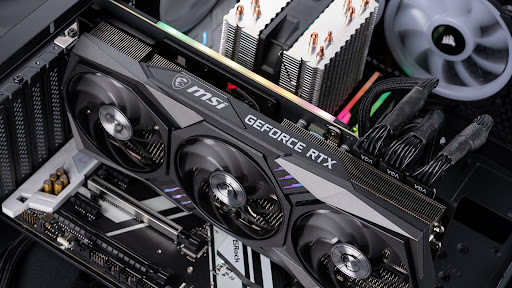A new graphics card might be on your wish list, but you might be wondering which type of security is right for you 128-bit GPUs or 256-bit GPUs? Identifying the relative strengths and weaknesses of graphics cards is not something that is easy to do. In addition to the graphics processing unit itself, there are many other components that must be taken into consideration, such as memory, stream processors, and others. Secondly, there’s the data transfer rate, or “bitrate,” of the bus that acts as a link between the memory of the card and the processor of the card. As you can see, when all these factors are taken into consideration, a 128-bit graphics card isn’t necessarily better than its 256-bit counterpart, even though it may seem counterintuitive.
Table of Contents
Function
A graphics card’s bitrate is a measure of how much data it can move between the GPU and the RAM during each clock cycle of the CPU in order to enhance the graphics performance. Part of the overall memory bandwidth, or throughput, of the card, is one component of the memory throughput. In addition, a card with more bandwidth is able to draw pictures to the screen more quickly and with higher resolution, resulting in images that are smoother and of higher quality.
Performance
It is important to understand that the actual throughput or bandwidth of a graphics card, measured in gigabytes per second rather than bits, depends on both the bitrate of its bus and the frequency of its random-access memory. In order to calculate the RAM’s frequency in megahertz, you divide the bitrate by 8 in order to convert it to bytes, and then multiply the result by the RAM’s frequency in megahertz. The bandwidth of a 128-bit graphics card combined with a 3,000-MHz memory module would be 48 GB/s, for example. If all other factors were equal, a 256-bit card would have twice that amount, or 96 GB/s, based on all other factors being equal.
Misconceptions
While it is true that, all things being equal, a 256-bit graphics card offers double the memory bandwidth compared to a 128-bit graphics card, it is not the case that two graphics cards will be separated only by the size of their bus. It is also important to keep in mind that other factors, such as the amount and speed of RAM, are always in play. As a result, it is important to always compare cards according to their overall memory bandwidth, rather than their bitrate, for this reason.
Uses
In general, 128-bit and 256-bit graphics cards are both suitable for the vast majority of users. In addition to being more than adequate for basic computing, they are also excellent for budget gaming and general usage of 3D graphics packages such as 3DS Max and Maya. A 256-bit card remains the most popular enthusiast-level card, with only the most powerful and expensive performance-level cards rated as having 320-, 384-, and in rare cases, 512-bits of memory.
Overclocking
The bitrate of a graphics card is physically limited by the number of pins it has compared to the processor, so it cannot be overclocked as a processor can. The number of bits in a 128-bit card can never be increased until the card becomes a 256-bit card, in other words. As memory bandwidth is a function of bitrate and RAM frequency, however, it is possible to increase a card’s overall throughput by overclocking its RAM, since memory bandwidth is a function of bitrate and RAM frequency. The bitrate and RAM frequency serve no purpose other than to contribute to the overall memory bandwidth, thus any increase in one is equivalent to an increase in the other since both play the same role.
The good news is that overclocking RAM is always more effective on cards with a higher bitrate than on those with a lower bitrate. When the RAM frequency of a 128-bit card is increased by 128 MHz, an additional 2.048 GB/s of throughput results as a result of the increase. Instead, if the card has 256 bits instead of 128 bits, that gain will be doubled to 4.096 GB/s.

